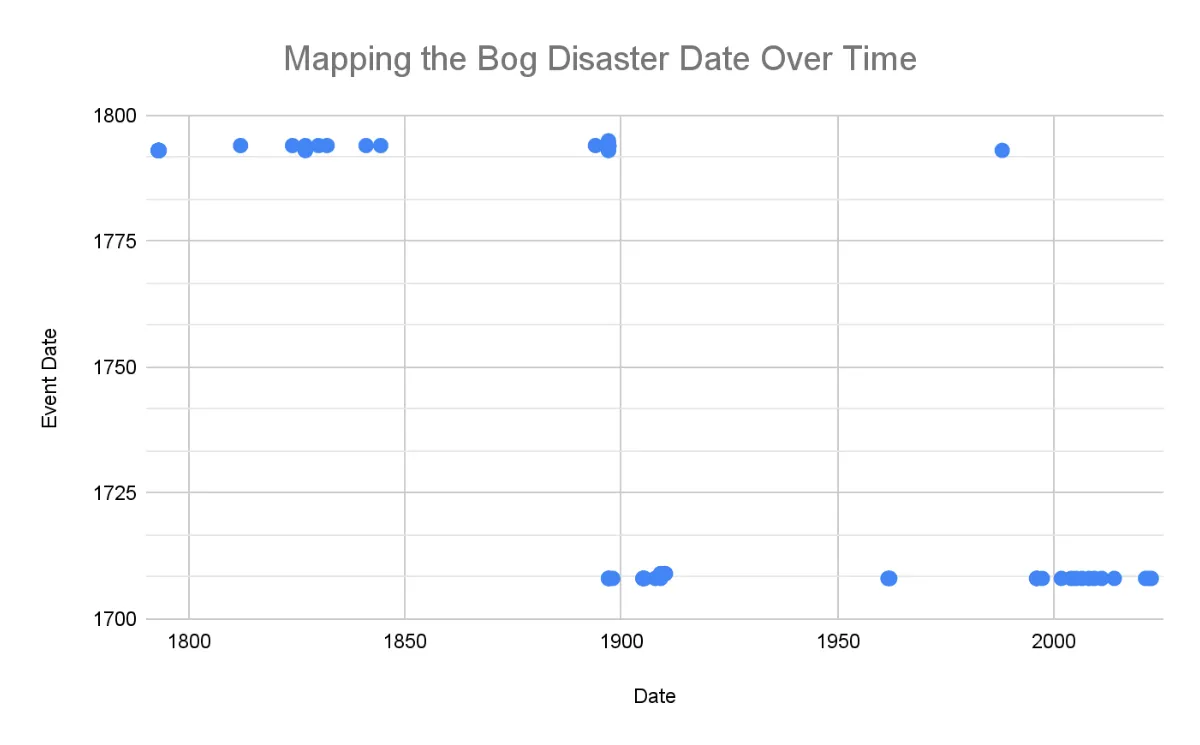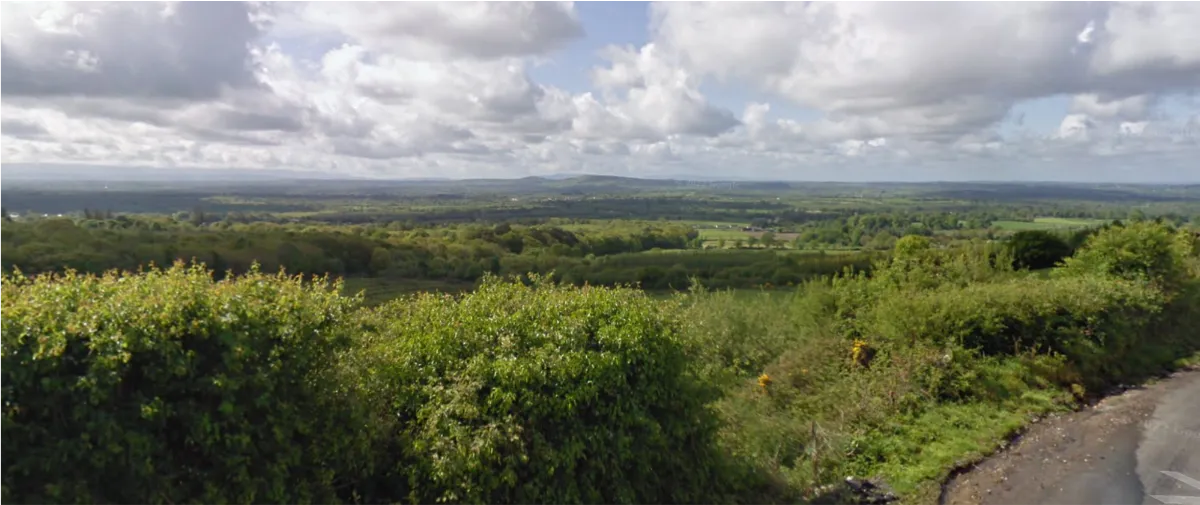Bogged Down by Mistakes: Tracking two hundred years of Irish Misinformation
Daniel Ryan - 22nd July 2024
Recently, I’ve been researching an area in County Limerick, Ireland, for a genealogy project, and I came across a bog burst, one of the deadliest bog disasters in Ireland. If you try to look up the Castlegarde bog disaster in Ireland that killed 21 people, you will find conflicting information. This was one of the initial articles I found:
_“A correspondent points out that in the Wonderful Magazine for 1794 there appears the following curious parallel to the disaster which has just caused such consternation in the Killarney district. The occurrence is reported as follows:
Singular Phenomenon of a Moving Bog in Ireland — On a night in December last a portion of the bog of Castle-guard or Poulenard moved in a body in length about a mile and breadth about a quarter of a mile along a valley that runs through part of the bog, and buried three houses, containing twenty-one persons (three only of whose bodies are yet found), six cows, some pigs, stacks of corn, hay, &c. It has not yet reached the Lough of Coolnapish, and is yet moving…”_
- Westminster Gazette, 30 December 1896
Compare that with something recent, and there are some obvious discrepancies:
“Large tracts of bog are characteristic of Irish uplands and the phenomenon of recorded landslides, although rare, dates back to the 16th century. In 1708, 21 people died when Castlegarde bog in Limerick collapsed.”
-The Irish Times newspaper, 11 February 2021
Looking at other accounts, I found claims about the event happening in 1792 and 1793 as well. So, did the Castlegarde bog disaster actually happen in the year 1792, or in 1793 or 1794, or even in 1708? Were there two disaster events? Just about every modern source about the disaster has recorded the wrong date. To unravel this historical puzzle, I compiled a chart from all the sources I discovered about this disaster, trying to go back through the records as far as possible, and plotting the results in a scatter graph. I used resources such as the Internet Archive to find old books, and looked in the Irish News Archives and the British Newspaper Archive to find old news articles.

Here is the raw sheet data showing copy mutations over time.
The further back you go, the more accurate the information becomes. All early sources point to the night of December 22nd, 1792. The bog started at a place in Ireland called Portenard, aka Portnard, and travelled to Castlegarde, continuing its path of destruction. Most of the facts in the story have remained correct over time, including that 21 people died, so we can be fairly confident that we’re only dealing with a single event.
Looking at the data, you can see the event date changes from 1792 to 1793, first mentioned in the Mnemonika, or Chronological Tablets by William Darby published in 1812 - 20 years afterwards. Then oddly the event date changes to 1708 in the Dublin Evening Telegraph (the earliest mention I’ve found). This date is wrong by an astounding 84 years! Almost all publications discussing the event after this time use 1708 rather than 1792 as the date it occurred.

Portnard, Limerick, Ireland, looking south. Google Streetview, 2009.
So, how might some of these errors come to be? I can make some educated guesses:
- Most papers don’t mention an exact date but say something like the event happened on “the night of Saturday se’nnight” (sennight is archaic, and means “week”) or the article “is copied from the Dublin Journal of Saturday last”. I found it super easy to mess up the dates, especially with two “Saturday se’nnight” in the article.
- Some papers don’t mention any type of date, even when the event happened over a month before.
- I’m not sure how the date “1708” came to be; maybe it was a badly printed “1793”. I could not find any record of the event date of “1708” before 1897, so it has been used for over 120 years. The Report of the Committee of Investigation on Bog Flow in Kerry made this date popular, as it was commonly used as a reference. So, most modern sources still use the “1708” date today.

Spooky “1708” coincidence searching on Irish News Archives.
Sadly, there is very little information about the Portnard bog burst — and an explosion and fire which burned down the Public Record Office in Dublin in 1922 probably didn’t help. Perhaps this is why misinformation about the event has been spread for so long. Only now, with newspaper archive websites like the British Newspaper Archive and Irish News Archives, can we access these long-forgotten papers of the 18th century. I have decided to try to rectify this by writing a journal article, which I will do once I’ve finished collecting as much information as I can find.
In summary, I see this as a cautionary tale: just because something has been cited as a fact for over two hundred years, doesn’t mean it’s true!